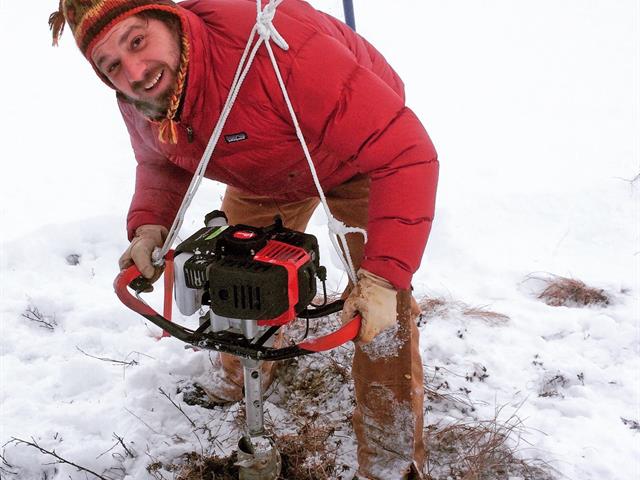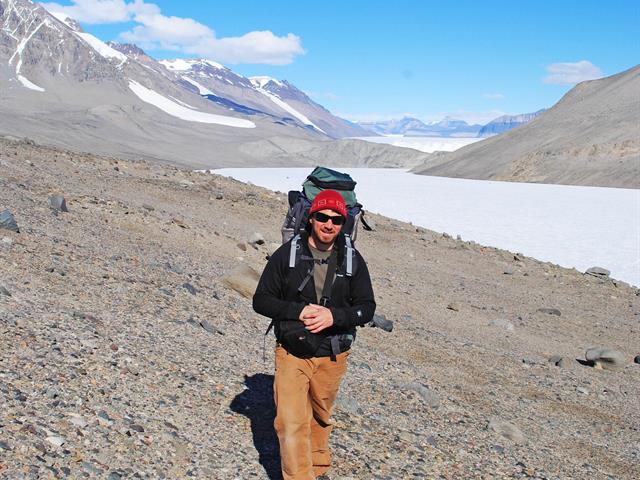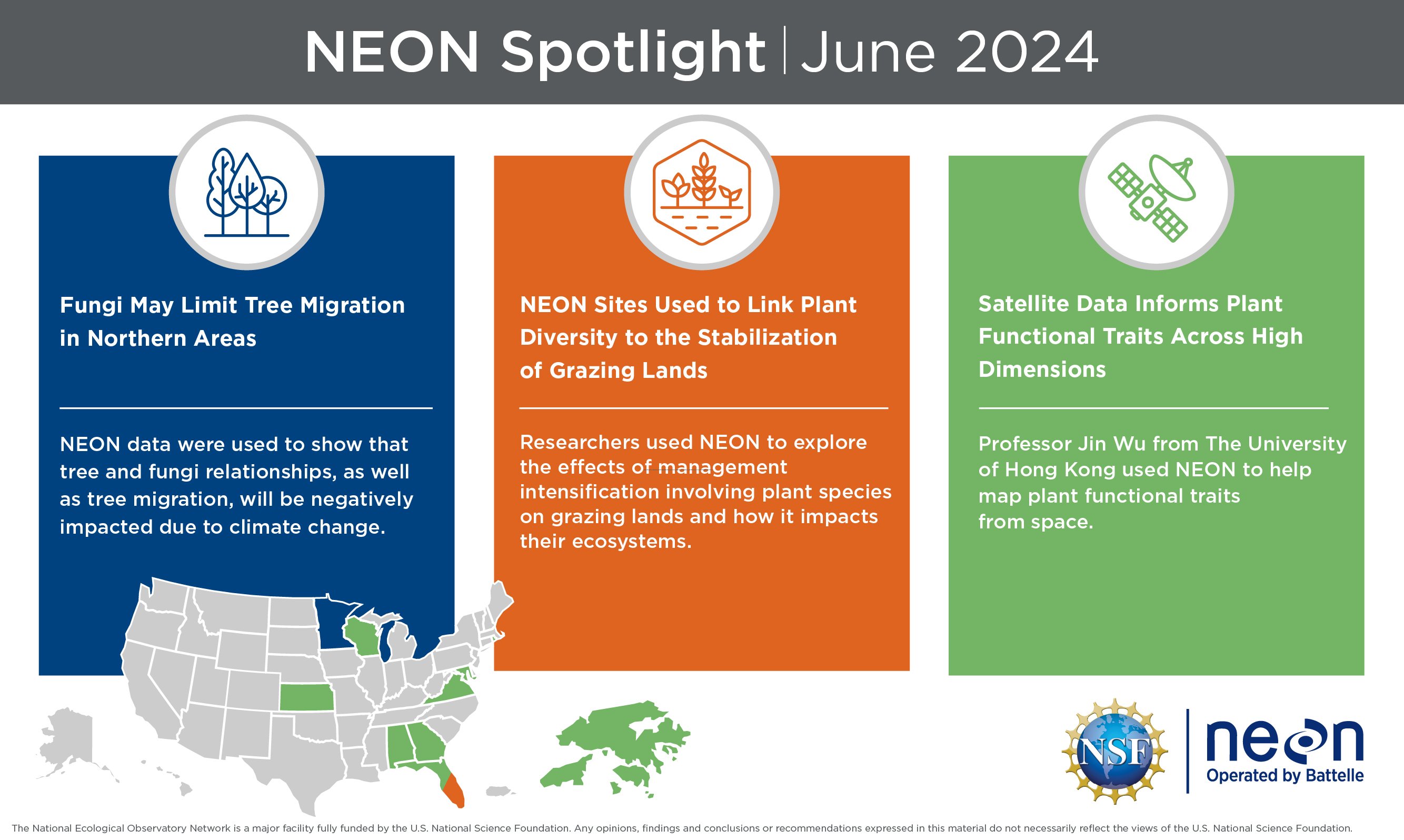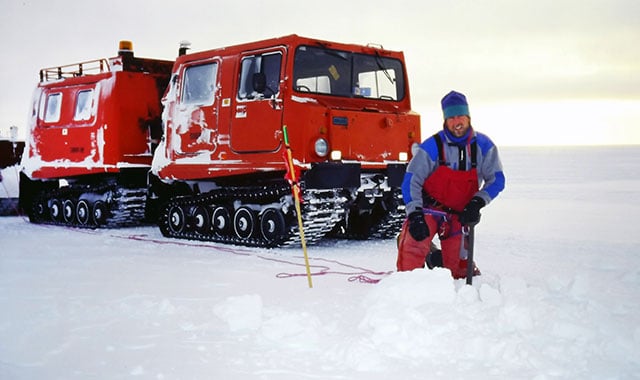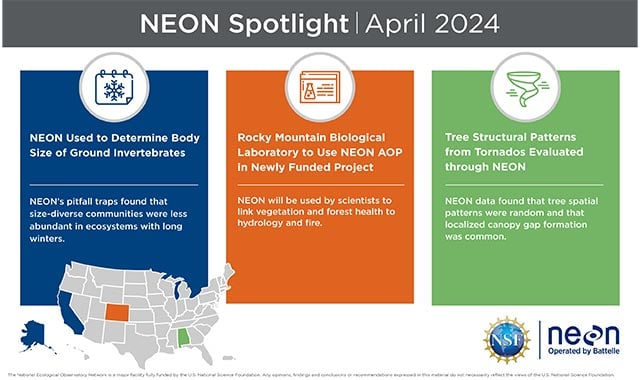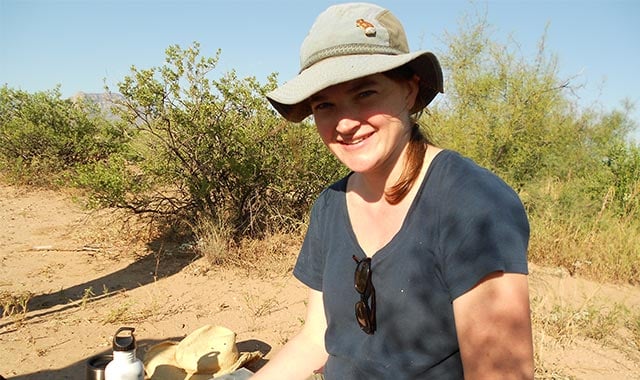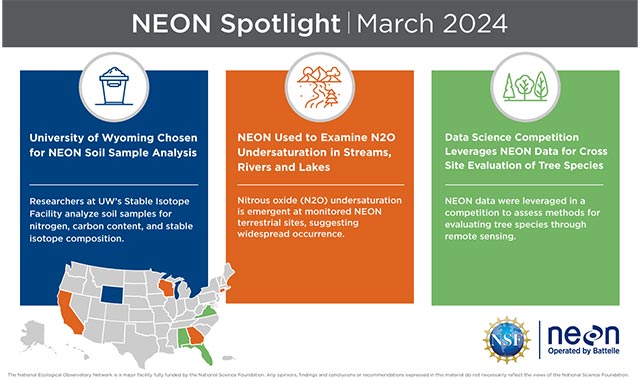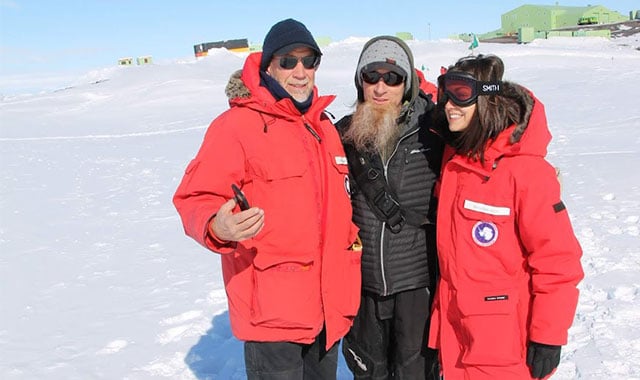From the Dirt Grew Connections that Shaped Career of Battelle Scientist Mike SanClements

Connections are incredibly important—the people, places and things that engage us also shape our lives.
Certainly, this is true for Battelle Research Initiatives Lead Mike SanClements. The places he’s been and the people who have guided and supported his career in science have helped him to become the person he is today. An 11-year employee at the National Ecological Observatory Network (NEON) in Boulder, Colorado that is managed by Battelle for the National Science Foundation (NSF), he has grown to realize that making connections that enable science is what is fulfilling in his career.
His love of dirt—yes, dirt—has been a North Star for SanClements. It started at his father’s excavation business outside of Boston, when as a 12-year-old SanClements learned to operate a backhoe. That love remains to this day. “Soils in my mind are the mediator of our planet, from the atmosphere, to vegetation, to water quality,” he said.
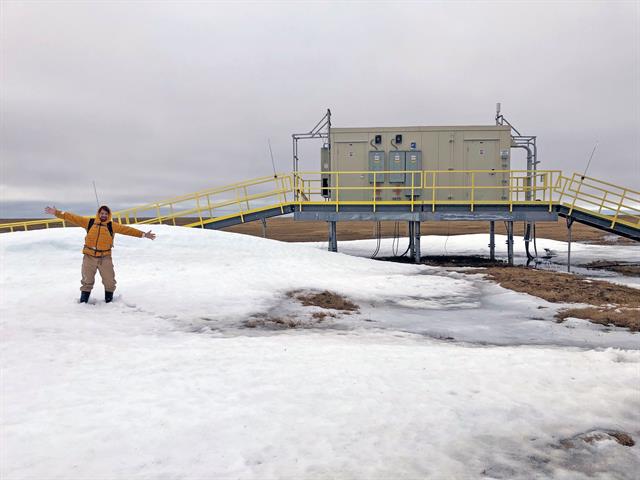
His father also was an avid gardener, so it makes sense a love for resource conservation might be in the future for the son. Spending lots of time outdoors in the White Mountains and other outdoor pursuits, however, didn’t provide a clear path for SanClements. He points to influential academic advisors at the University of Montana, the University of Maine, and the University of Colorado Boulder who guided him to a career in science.
As an undergrad Resource Conservation major in Montana, he benefited from tutelage from Dr. Tom DeLuca who inspired him to go graduate school. While getting a master’s degree in Soil Science at North Carolina State University, SanClements realized he wanted to continue a career in research. Then, while earning his doctorate degree in Ecology and Environmental Science in Maine, he was fortunate enough to work with distinguished Maine Professor Dr. Ivan Fernandez, a brilliant scientist and top-notch mentor.
In his post-doctoral time at Colorado University at Boulder, he studied with the famed researcher Diane McKnight, one of the founding principal investigators of the McMurdo (Antarctica) Long Term Ecological Research Project. He spent two seasons with her and the team studying the McMurdo Dry Valleys to understand the formation of dissolved organic matter, the chemistry of which informs other research because of the absolute absence of vascular plants in Antarctica.
Back in Boulder following his polar research in 2011, SanClements’ wife Mary got her dream job and the couple decided to make the town their home. At the time, NEON was just getting started, so he applied for a staff scientist job and got it.
He worked on the continental-scale observatory’s flux towers and other instrumentation, building them in places around the country and ultimately transitioning to lead the team through construction and operations. “My colleague Rommel Zulueta and I spent a lot of time in the field designing our sites, pinpointing where the towers were going to go,” he said.
In 2014 SanClements led an NSF Macrosystems Biology proposal involving multiple institutions to collect and analyze hundreds of soil cores that would otherwise have been discarded during the installation of NEON soil sensor profiles. To successfully bore holes, install sensors, and collect cores at permafrost sites SanClements and his Battelle colleagues Forest Banks and Rommel Zulueta worked with John Holmgren of John’s Machine Shop in Fox, AK to create a sled-mounted permafrost drilling rig that could be towed behind a snowmachine—this drilling rig is still in use on other Battelle projects today.
At that same time, he was writing a book that gained him some attention. Plastic Purge (How to Use Less Plastic, Eat Better, Keep Toxins out of your Body and Help Save the Sea Turtles!) was a way to translate sometimes inaccessible science into a vehicle that could bring common sense to everyday people.
During all this work, SanClements realized that conducting his own research is exciting—but working to maximize the amount of science that a program like NEON can enable is what he finds most important. “I like doing my own science, but it’s so much more rewarding to do be working with an entire community to facilitate as much of their work as possible” he said. “With NEON we can help researchers do things that weren’t possible before.”
Because he has connected with so many people in the scientific community through maintaining an informed position on the research of his colleagues at Battelle, SanClements can provide “connective tissue” between projects. For instance, the National Center for Atmospheric Research (NCAR) in Boulder has systems models that can take advantage of the open data captured by NEON. “Now we can fill the pipeline,” he said. “We can link NEON observations to NCAR’s models and create even more new research opportunities and community tools for conducting science.”
SanClements was on staff at NEON when Battelle won the contract to complete construction and then operate the national observatory in 2016. The project was completed on time and budget and today is an integral resource for the world’s research community. SanClements said nearly 400 projects have reached out to NEON’s Research Support and Assignable Assets Program, looking to leverage NEON resources and infrastructure in pursuit of their own work. “Enabling science is what we do,” he said. “I love connecting people to the resources they need and seeing new opportunities and getting them to the right people.”
A decade ago, SanClements said he thought NEON would be a success when researchers are not just downloading our core data products, but also collecting their own samples at our sites, mounting additional instruments on our towers, and collaborating with NEON staff to advance discovery. SanClements believes it’s now a true community integration with the Observatory.
“I see that happening now,” he said. “When we started, I was trying to make things happen and the idea of the observatory was fantastic. Until Battelle took over, we couldn’t bring it to fruition. Once Battelle took over, we were able to do what we were supposed to do. Now, people are using our data, leveraging our support program, and publishing their results. People consider us now when planning their research. They interface with us. Nationally and globally. It’s incredibly rewarding.”
Battelle’s mission of using science for the betterment of society resonates with SanClements, as it does with many who work for the nonprofit. “I think Battelle is fantastic,” he said. “Seeing us living that role of enabling science is amazing. Battelle is a great steward of the resources it’s charged with.”
Today, SanClements works to enable internal staff to be innovative by connecting them with internal funding resources, provides workforce development for polar regions and uses existing infrastructure to enable cross disciplinary research and science. He personally has authored or co-authored nearly 50 papers and successfully written millions of dollars in grants.
But at this stage in his career, he says what’s really rewarding is enabling the broader community in their work. “My daughter Hadley is 10 and when she’s in her 30s the NEON research sites will still be producing data,” he said. “I think that’s really cool.”
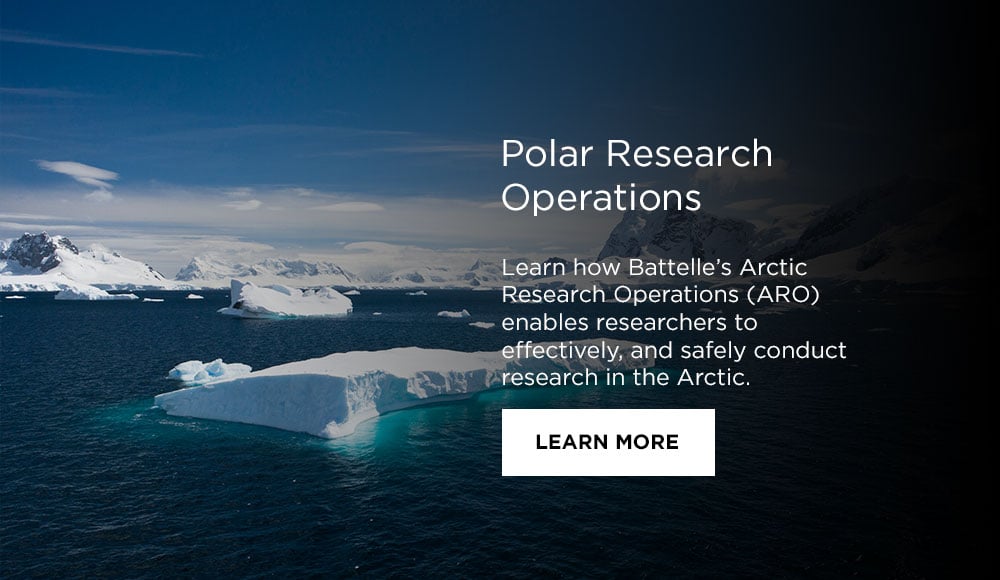
Related Blogs
BATTELLE UPDATES
Receive updates from Battelle for an all-access pass to the incredible work of Battelle researchers.
